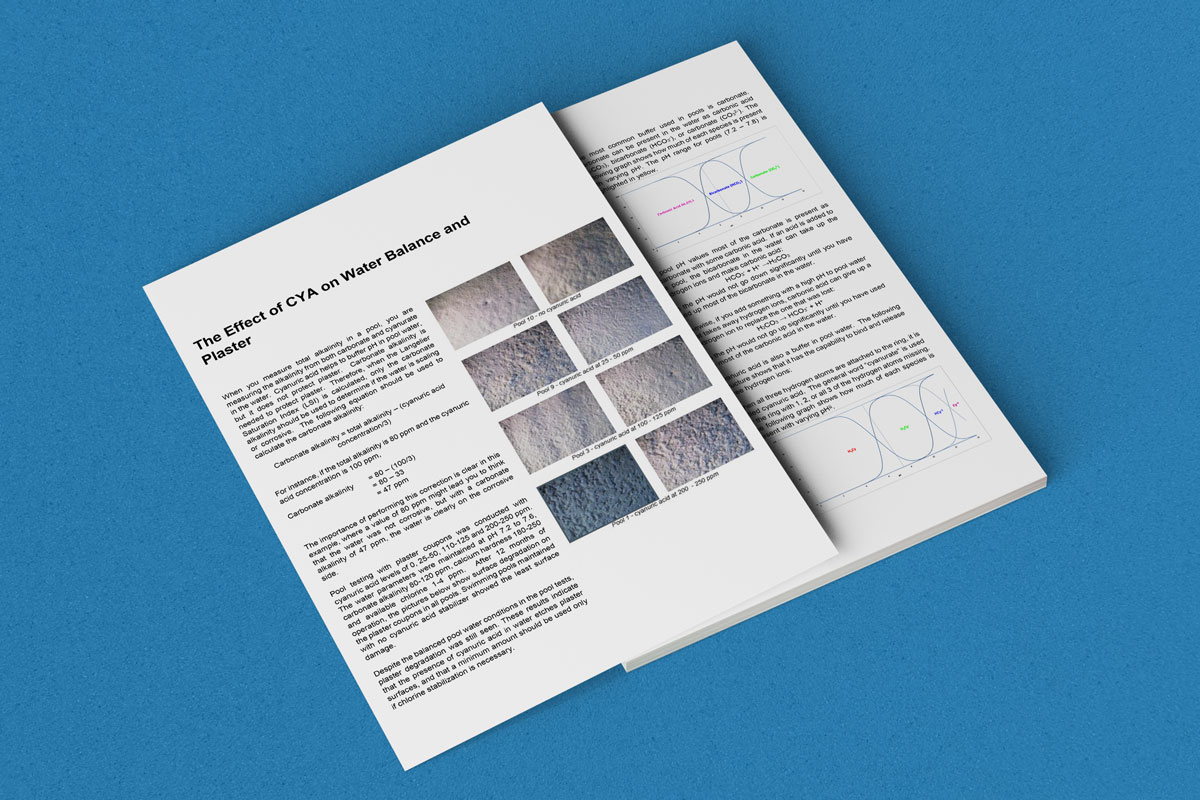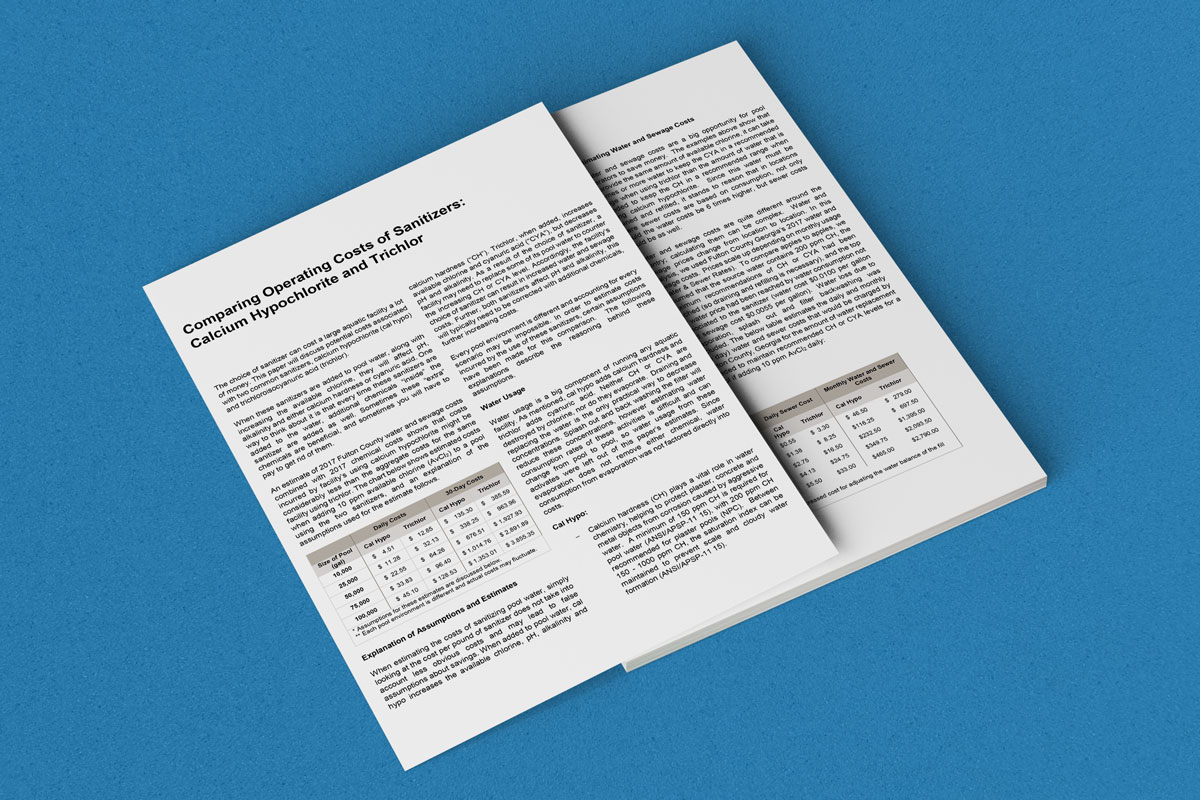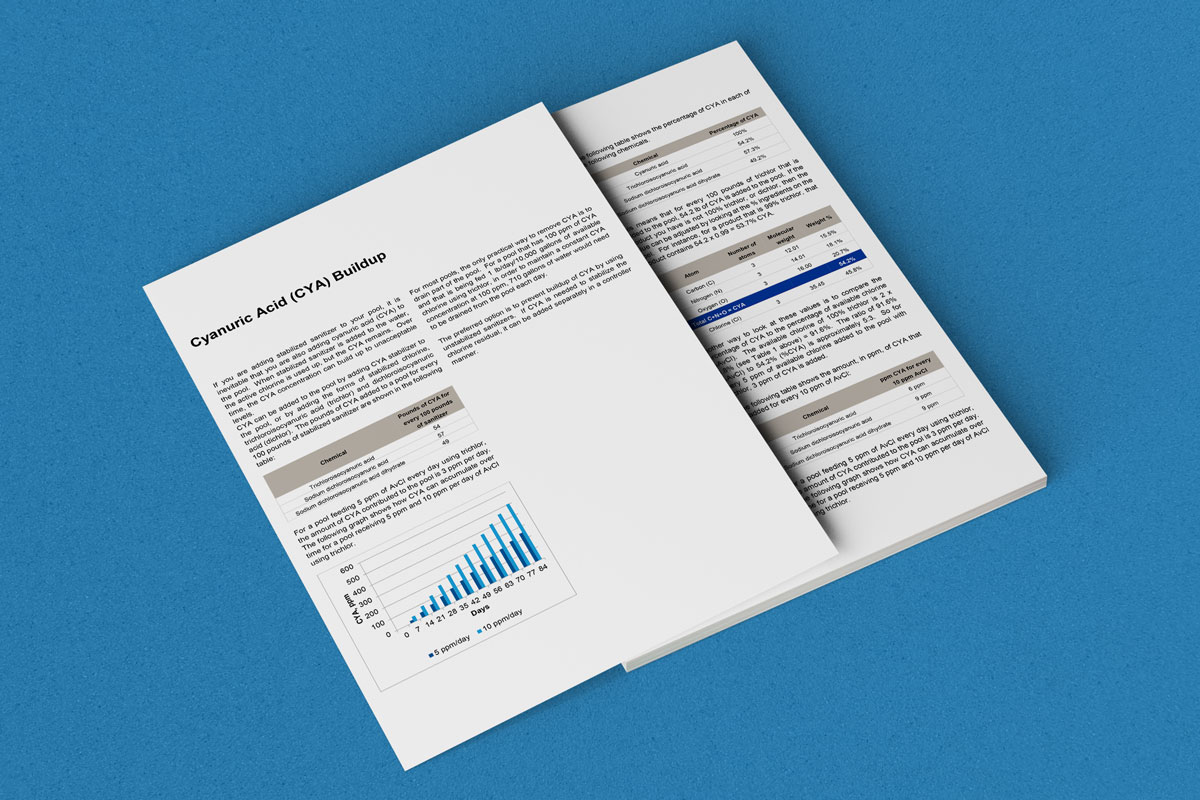White Papers
Pool water chlorination has to be right all of the time – and so do Cyanuric Acid (CYA) concentrations in the water. The CDC’s 2015 published data outlining CYA’s impact on chlorination disinfection efficacy for destroying Cryptosporidium should be important to all concerned about swimmer/bather safety. We have developed the following series of white papers to provide up-to-date information and scientific data regarding the use of CYA products such as Trichlor and comparing it to Calcium Hypochlorite (Cal Hypo) use.
CYA slows down chlorine’s reaction rate with waterborne pathogens and this can increase the risk for disease transmission – the higher concentration of CYA (CYA levels in pools), the slower the reaction rate of chlorine. Here is useful information regarding the strength and timeline for disinfection when CYA is used.
Every time these two different sanitizers are added to water, additional chemicals “inside” the sanitizers are also added. Sometimes these “extra” chemicals are beneficial, and sometimes it’s costly to get rid of them. Here we compare the potential costs affiliated with calcium hypochlorite (cal hypo) and Trichlor use. The cost differentials may surprise you.
CYA is part of the molecular structure of Trichlor and is not destroyed by sunlight or pool chlorine levels, so it continues to accumulate in pool water with each addition, reducing chlorine’s effectiveness. This report details the buildup of CYA over time and offers you a Cyanuric Acid substitute and alternate aquatics maintenance strategies.
High CYA levels can result in damage to a pool’s plaster and, if left untreated, can compromise the integrity of the plaster, leading to costly repairs. Find out about the measured effects of Cyanuric Acid (CYA) on water balance (pH) and the surrounding plaster.




